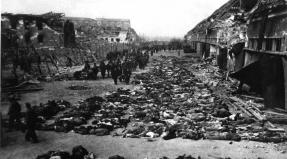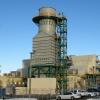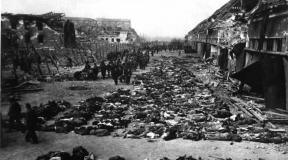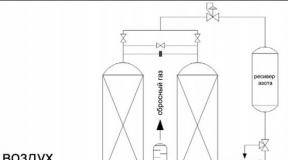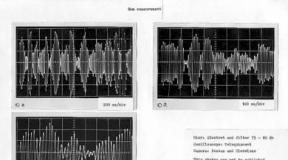How to choose a chest freezer. How to choose a chest freezer: review of models, reviews Chest freezer dimensions
A compact and spacious chest freezer is the optimal solution for equipping small retail outlets, utility and industrial premises, as well as for freezing food at home. It is a horizontal freezer with one or several compartments of varying volumes. This article will help you choose a chest freezer for specific purposes, taking into account all significant parameters.
Number of cameras
Depending on the manufacturer and model, chests can be single-chamber or divided into two or three chambers.
The first option is optimal for storing large products. Chests with two chambers require freezing of products with the ability to sort them according to shelf life and other important parameters.
Multi-section chests are suitable for both home and commercial use. Chests with divided chambers, along with their advantages, also have a number of disadvantages.
For example, small compartments do not always allow rational use of chest space when it is necessary to freeze large-sized products. In this case, it is advisable to pay attention to models with one large chamber and several separate covers.
Freezer volume
The volume of the main freezer directly depends on overall dimensions equipment. It is calculated in liters and means how much product can be placed inside.
The modern model range is represented by equipment with a volume of from 80 to 700 liters. Small-sized chest freezers are designed primarily for domestic use, and models from 200 liters or more are suitable for both the home and a store or restaurant.
Most chest freezers are equipped with special removable baskets and retractable partitions. This configuration allows you to rationally organize the space of the chest, allocating space for large and small products.
Temperature conditions of freezers
According to the type of temperature regime, chest freezers are divided into medium-temperature and low-temperature. The first type maintains the temperature from -5 to +5°С, second - from -10 to -25°С.
Depending on the set temperature, the chest can freeze from 6 to 50 kg in one day. A universal solution is multi-temperature models that allow you to independently regulate the temperature in the range from +10 to -25°С.
Defrost mode
Based on the type of defrosting system, chest freezers are divided into two types: mechanical and No Frost. The latter are more expensive, but this function effectively prevents the formation of ice.
However, as practice shows, for chest freezers this system is not as significant as for household refrigerators, so it does not always make sense to focus on it when choosing.
Prices for models with a mechanical defrosting system are significantly lower. Due to the design features that help retain cold air inside the chamber when opened, such chest freezers do not require frequent defrosting.
Energy class

Energy efficiency is the most important parameter when choosing a chest freezer, as it directly affects your electricity bills. Depending on the class, this equipment can be marked with letters from A to G.
Manufacturers currently offer equipment whose energy efficiency is not lower than A, but some models are characterized by the highest class - A+++. Such chest freezers are much more expensive, but in the long term they contribute to savings.
Climate class
Markings "N, SN, ST, T" indicate the climate class of the freezer.
The choice of this indicator should be based on the external temperature at which the chest will operate. However, one should also take into account the fact that the higher the climate class, the higher the energy consumption will be.
Thus, there is no point in purchasing a class “T” chest without an objective need. Models of the highest climate class "T" function properly at temperatures up to 43°C, so they are often purchased for use as outdoor retail equipment. In domestic conditions the best option there will be chest freezers with markings "SN".
Cooling system
Most modern chest freezers have a built-in cooling system: all elements are built into the walls of the case. Without protruding parts, the chest can be placed absolutely anywhere, which allows you to save useful space and choose the optimal location area.
However, many companies continue to produce budget models on which the condenser is installed like a standard refrigerator: a grate with tubes is placed on the back wall of the chest to ensure heat exchange.
Such equipment must be placed against the wall due to its structural features. In addition, such chests are demanding on ventilation, since heat exchange is carried out exclusively through the rear grille, while in modern models it is through the entire body.
Dimensions and parameters
Depending on the number of chambers and their total volume, the width of the chest freezer can vary from 48 to 200 cm, height - from 73 to 105 cm, and depth - from 50 to 85 cm.
All types of such equipment are separately standing structure, not designed for embedding. The main distinguishing parameter of chest freezers is the type of door - lifting or sliding.
Chests with a lifting lid are designed for installation in warehouses or home use. Sliding doors, in turn, can be flat or convex, which makes them optimal for use in retail outlets. As a rule, they are made of tempered glass coated with a sun protection layer.
Housing materials
One of the most important factors influencing the longevity of the equipment and the quality of freezing is the materials used to make the housing. In the production of the external and internal parts of the cases of budget models, ordinary steel is used. As a result of the lack of material treatment, the service life of the equipment can be significantly reduced. That is why, if possible, it is recommended to give preference to chests whose body is made of galvanized steel.
In addition to steel, the interior of the housing can also be made of aluminum. It has better thermal conductivity, but its main disadvantages are susceptibility to oxidation, which contributes to the long-term preservation of odors, and low strength.
The galvanized steel inner casing is corrosion resistant and does not absorb odors, but steel has lower thermal conductivity than aluminum.
Control type
The type of chest freezer control can be electronic or electromechanical. In the first case, the control panel is equipped with a regulator with the ability to set the temperature with an accuracy of a degree and a digital display that displays the mode set by the user. Electromechanical control allows you to adjust the cooling range without setting precise parameters.
Additional options
Some models of chest freezers are equipped with a built-in quick and deep freezing system. It is designed primarily for vegetables, fruits and berries, but is also suitable for dairy and meat products.
One of the main parameters is the possibility of autonomous operation. When there is a power outage, the chest is able to maintain a negative temperature for a long time - from 6 hours to 3 days.
Equipment of this type is usually produced in white, blue, black and silver colors. Manufacturers equip some models of chest freezers with a thermometer, a lighting system, a lock and rubber wheels. The latter make it easy to move the equipment even when fully loaded.
It is not difficult to choose a chest freezer that is suitable for specific purposes, while saving money. It is enough to study all the above recommendations and choose a specific model based on your own needs. The modern market for chest freezers is so wide that finding suitable equipment in any price range will not be difficult.
It is no secret that the best properties and freshness of frozen products can only be preserved at extremely low temperatures. To ensure optimal storage conditions for your products, you will need to buy a chest freezer.
The established temperature standards for most types of frozen food and ice cream correspond to approximately -18°C. The household freezer of a regular refrigerator will not be able to please you with such excellent performance. But chest freezers for home and shops maintain the required temperature (up to -26°C) and will preserve meat/fish products, semi-finished products, frozen berries and vegetables indefinitely. Ergonomic, compact and reliable, they will meet your expectations with trouble-free operation and products of pristine quality!
How to choose and buy chest freezers correctly?
Before purchasing, you should decide where and under what conditions the cabinet will be used. The price of a chest freezer depends on several fundamental nuances: useful volume of the chamber; climate class (up to A++++); demonstration characteristics; quality of refrigerant and materials of construction; auxiliary functionality. If you plan to use the equipment outdoors in the summer heat, for example, to sell ice cream, then only the highest climate class “4+” is guaranteed to cope with the load.
Since air conditioning is practiced in retail premises, which means a more favorable temperature environment, you can buy store chest freezers with a reduced A+ rating.
Do you want to buy a home model with professional characteristics, but at a more affordable price? Agree, even if you have a very large family, you are unlikely to need a chest freezer with a glass lid and a chamber volume of 650 liters in your home. But for supermarket chains and food warehouses this is a worthy alternative. Affordable prices, compactness and ease of operation - these are distinctive features household models. Looking for profitable solutions Pay attention to the chest freezer for home with a blind lid. Good viewing properties and demonstration qualities immediately add a significant markup to the price of the equipment. Home chest freezers with a blind lid are economical and have no frills. At the same time, they are endowed with all the necessary parameters and functions necessary for a modern home.
Equipment for trade enterprises stands out with its elegant modern design and ergonomic shapes. Sales of chest freezers include the following design range:
- Chest-type chests with a blind lid are a good choice for restaurants, hospitals, and catering establishments;
- Chest freezers with glass lid for stores. Available with: straight sliding windows; curved sliding doors - optimal in shopping areas;
- corner chests are the perfect choice for the most effective use retail space. To save space, it is recommended to buy chest freezers with curved lids of different sizes. Such cameras can be installed on top of each other.
A chest freezer with curved glass copes well with its main purpose: low-temperature conditions, an impressive display area and good visibility of goods. It can become a noticeable decoration of any store. Should we remind you that the excellent display capabilities of chest freezers increase sales and contribute to accelerated implementation. The glass is treated with an anti-fingerprint coating, as well as a metal oxide layer. The latter reflects solar and infrared rays, reducing the flow of thermal energy.
A high degree of reliability is one of the main requirements when purchasing commercial equipment. The guarantee of the highest strength and increased performance characteristics of chest freezers with a glass lid are high-quality materials of the body, lids and refrigerant. A protective mesh on transparent doors made of high-quality tempered glass will smooth out mechanical stress and prevent crumbling during deformation. Additional stiffening ribs, a reinforced supporting frame and an aluminum edging of the chest freezer with a glass lid significantly increase the strength of the structure. The lid flaps can easily withstand an exorbitant number of opening cycles per day, and the cabinet looks like new even after months of intensive use. A built-in lock restricts access, and reinforced wheels ensure easy maneuverability. Cutting-edge advances in the refrigeration industry minimize maintenance and reduce energy consumption by 10-15%.
In the WhiteGoods online store you can buy compact, silent and easy-to-maintain chest freezers from reliable European brands. Our prices are affordable for any budget. We are confident in the quality, so all equipment is covered by a company guarantee.
This equipment is universal; this equipment is not suitable for domestic use. But there is one exception - chest freezer. The low-temperature chambers of home refrigerators can no longer cope with the load. After all, most families need to store significant reserves of food, semi-finished products, and preparations of fruits and vegetables. For this, standard devices are simply not enough.
Chest freezers are in steady demand in the RigMart campaign. Thanks to the excellent technical and consumer characteristics, there are practically no differences between professional and household models of this equipment. RigMart has both small compact models of equipment and large devices that simply cannot be placed in a standard apartment.
Features of use
A home chest freezer may differ in size from an industrial device, but in terms of characteristics and other parameters they are almost identical. This is a technique that has a body design in the form of a rectangular top-loading box equipped with a sealed lid. The body is made of sheet metal, between the layers of which high-quality thermal insulation material is poured.
To ensure internal cooling, each model is equipped with a powerful refrigeration unit or has the ability to connect to a remote cooling system. Due to its tightness and excellent insulation quality this device requires very economically. Best models are able to maintain the set temperature inside for up to three days when the power supply is turned off.
A home chest freezer can not exceed 850mm in height, be used as a built-in appliance, installed on a balcony or in a garage, in a utility room. Of course, in small apartment Finding a place for an additional device is quite difficult, but in private homes and cottages such equipment has long enjoyed well-deserved popularity.
Main Features
 Manufacturers have mastered the production of three types of equipment. This is a chest freezer with a solid hinged lid, a transparent straight or curved lid. Blind covers are used for equipment that is installed in warehouses, laboratories and utility rooms; the same devices are mainly purchased for home use. Equipment with glass lids is used to equip retail outlets and organize street and outdoor trade.
Manufacturers have mastered the production of three types of equipment. This is a chest freezer with a solid hinged lid, a transparent straight or curved lid. Blind covers are used for equipment that is installed in warehouses, laboratories and utility rooms; the same devices are mainly purchased for home use. Equipment with glass lids is used to equip retail outlets and organize street and outdoor trade.
The lion's share of models have a low-temperature operating mode, that is, they provide about 18 degrees below zero inside. In addition, the chest freezer allows you to quickly cool food to the appropriate temperature without damaging the supplies already stored inside (superfrost mode). This is important when preparing fresh preparations for the winter, which ensure freshness and preservation of all beneficial properties.
The products inside are placed in layers and in special baskets, which are included in the package. If necessary, RigMart can retrofit any model. Here you can choose a device for home or any other use. The RigMart company offers chest freezers with volumes from one hundred to several hundred liters, which can be equipped in any store, production facility, or used for household needs.
What is climate class
 For low-temperature units, the conditions under which they are operated are very important. The climate class indicates the energy consumption level of each model. The chest freezer of a high climate class has received more reliable thermal insulation, so it can operate in heat up to 40 degrees without damaging the equipment.
For low-temperature units, the conditions under which they are operated are very important. The climate class indicates the energy consumption level of each model. The chest freezer of a high climate class has received more reliable thermal insulation, so it can operate in heat up to 40 degrees without damaging the equipment.
If you compare a device of the highest class (A or A+) and a chest freezer, the dimensions and main parameters of which are identical, but this unit is of a lower class, then the energy consumption of this equipment may differ significantly. The only drawback of the devices high class is a decrease in useful volume. Such models are noticeably more expensive, but gradually the difference will pay off due to savings.
The advantage of high-class units is increased reliability. These models often have additional functions that are not provided in “simpler” equipment, retain the ability to autonomously maintain internal temperature longer, and are characterized by low noise, durability and ease of use.
Chest freezer dimensions
This is an important parameter that must be taken into account when choosing technology. The more compact the equipment, the easier it will be to place it. RigMart offers a range of models of various sizes with the same parameters, our specialists will help ensure rational use your area.
Wall thickness can also significantly reduce the size of the interior space. This indicates a good layer of thermal insulation, therefore, such a unit belongs to a higher climate class.
A chest freezer for the home is an alternative to the usual freezers built into refrigerators. Previously, large freezers were found only in stores, factories, and catering establishments; today, manufacturers offer compact chests for home use.
Why do you need a large freezer?
Every refrigerator is equipped with a freezer or even two, but some people think about buying a chest freezer. How is it different from a regular freezer? Advantages:
- Long-term storage of products.
- Compactness. A freestanding chest takes up minimal space in the kitchen.
- Capacity. Large volumes of products are loaded.
- Comfortable use. In a regular freezer, the food is mixed up, but here you can put it in baskets. When you need something, you can quickly find it.
- Mobility. A small household appliance can be easily moved from place to place, taken out of the apartment, or transported in a car.
- Practicality. Roomy models loaded with voluminous packages, whole carcasses. The lid of the compact freezer can be used as an additional useful surface.
- Low power consumption.
- In commercial versions, the lids are equipped with locks.
- Reasonable organization of space. There are special baskets.
- Deep freezing. To preserve maximum nutrients in vegetables and fruits.
- Autonomous cold. When the power goes out, the temperature inside the chamber remains low. The length of the period depends on the brand and manufacturer, usually it is 6-8 hours.

Chest or camera - which is better?
Manufacturers offer two types of freezing equipment: they perform the same functions, but have several important differences. What is better - a camera or a chest? Let's compare their advantages:
- In boxes with a horizontal lid there is no differentiation of freezing modes. The vertical chambers have several isolated compartments that differ in temperature.
- Cameras consume more power.
- In the cells, the height of the shelves can be adjusted to make optimal use of space.
- Camera owners often complain about increased noise when the compressor operates, which occurs after setting the lowest possible temperatures.
- The chest is cheaper and more compact than a camera; it will fit into the narrowest doorway. It deservedly receives positive feedback from consumers.
What could be the disadvantages?
Disadvantages of chest freezers:
- Maintaining one temperature.
- Difficulty organizing space. Having to bend over to reach food from below. Inside there are hanging baskets-containers, but at the bottom everything is stacked on top of each other.
Who buys them
Chest freezers are used both at home and at work. They are in demand in small shops, cafes, and ordinary kitchens. You can store supplies of meat, ice cream, vegetables, and fruits in them. Will come in handy:
- for fans of healthy lifestyle - store plant products without loss of beneficial properties;
- those who like to stock up for future use;
- hunters and fishermen;
- gardeners and gardeners;
- mushroom pickers;
- pet owners - store food;
- for large families - for wholesale purchases.
- rural residents - for meat and dairy products of their own production.
What parameters to pay attention to when purchasing
- Cap, type and volume. For a store or cafe, larger sizes are needed - from 200 liters. The cover is transparent to show the product face. Options with a blind lid are suitable for home use. Volume - up to 100 liters.
- Climate class. The parameter indicates the upper and lower limits of the room temperature for normal operation of the freezer.
- Energy consumption per day. The class is determined by the type of compressor. Best option- A++.
- Dimensions. In order for equipment to work properly for a long time, it must fit freely in the room intended for it.

Important! Chest freezers are not recommended for use in unheated rooms. At sub-zero temperatures this technique is not used. Recommended range: +16 to +38°C. See the climate class on the packaging. Recommended: N to ST.
How to choose an option for your home
Almost all well-known brands of household appliances and refrigeration offer chest freezers. On the market you can find equipment from European brands - Gorenje (“Combustion”), Liebherr, Indesit, Kraft (“Kraft”), etc., Russian production- Italfrost, “Biryusa”, “Snezh”, “Don”, “Pozis”, “Sviyaga”, “Caravel”. There are also Chinese analogues - Tesler, Dexp.
The list is impressive - dozens of well-known companies offer freezing and refrigeration equipment of various sizes, capacities, designs, with different performance characteristics: Atlant, Hansa, Candy, Italfrost, Nord, Bravo, Avex, Beko, Whirlpool, Zanussi, Tesler, Delfa, etc.
To choose an option, the consumer needs to familiarize himself with the minimum set of marker parameters by which equipment for home or commercial use is selected.
- Load type. Models with vertical loading They look like a cabinet - these are freezers. Sizes: from mini to 600 liters. Horizontal ones open from the top - that’s why they are called chests, and also mobile cellars. Horizontal versions use space and energy more efficiently.
- Defrosting. What is more convenient, manual defrosting or “No Frost”? The automatic version of No Frost is a housewife's dream. The operating principle of chambers with automatic defrosting is simple: the fan that creates frost is turned off, and defrosting begins. The water flows through special channels, then the normal mode is turned on.
- Camera class. Indicates the ability of the equipment to maintain the set temperature to maintain the quality of the products: one star - storage 7 days at -6°C; two stars - 30 days or more at -12°C. Users decide which temperature regime is best.
- Control type. Selected based on reliability and functionality requirements. There are mechanical and electronically automated.
- Volume. Determined by user needs. A volume of 200 liters is sufficient for an apartment. For storing meat, game, and fish, it is better to choose a volume of 300, 400 liters or more.
Many buyers are interested in how much energy does the average chest freezer consume? The most popular volume for the home is 350 liters, and its optimal energy consumption is 70-75 kW monthly.
What they look like
Designers don't get too carried away appearance freezer boxes, they are all similar to each other. There are models:
- with metal lid;
- with stainless cover;
- with glass lid.
Versions with transparent lids are intended for stores - this is a kind of showcase through which the buyer examines the product.
Variety is achieved through the use of plastic, stainless steel or painted metal. Along with standard metal chests white designers offer new approach to the theme - color design. The Derby brand produces bright equipment, painted in different colors, with curved or straight glass.

Imported or Russian - what to choose
Which equipment to choose - Russian or imported? The options are compared according to a number of parameters discussed above. The advantage of domestic analogues is their low price and decent quality. Having reviewed competitors and analyzed demand, we will highlight the leaders:
- "Snow." Low cost and high level of reliability. Plus - all models have wheels for comfortable movement. Maintain performance characteristics in sub-zero weather and in hot weather.
- "Liebher." The high cost of German chests is justified by their enviable functionality. The costs will be recouped due to high energy efficiency. In the asset - high quality, comfortable use and good capacity.
- Frostor. A domestic manufacturer offers a compact chest. Attractive price, light weight. The model is equipped with a glass lid and metal baskets for food. 12…-25°C - operating temperatures.
- Polair. An example of high-quality Russian production. Transparent lid with curved glass. Suitable for any purpose - domestic or commercial.

Rating of chest freezers - top three
- Shivaki SCF-210W. Quick freezing of large volumes of food. Used to make ice. Freezing capacity - 9 kg per day. In case of power failure, food is stored for 15 hours.

- Pozis FH-250-1. The TOP of the best chests includes a model from an affordable price category. Production - Russia. Volume - 350 liters.

- Liebherr GT 4932-20. Tops the rating of reliability and demand. Manufacturer - Austria. Volume - 450 liters. Model with super freezing. Automatic mode. Freezing capacity per day - 31 kg. Automatic temperature adjustment.

Price categories
How much does an inexpensive chest freezer cost? To compare the cost of a product, you need to understand what the price depends on. There are three price categories:
- Low price segment. Small chamber volume. Good choice for the average consumer.
- Average category. Models from 600 liters. Additionally - differentiated temperature conditions, functions of dry freezing, shock freezing and others.
- Highest category. The price depends on the volume and quality characteristics, functionality and comfortable use.

Classification of chest freezers
Depending on the tasks for which freezing equipment is chosen, the freezing power, chamber volume, and display width are studied. Commercial versions are equipped with transparent lids.
For home. Examples:
- Indesit OS B 200 2 H. Price: 15,600 rubles. Weight - 59 kg. Volume - 215 l. Capacity - 14 kg/day. One compressor.
- Biryusa 14. Price: 10,700 rubles. Volume - 120 l. Capacity - 12 kg/day. One compressor.
For the store. Trading options:
- Frostor F200E. Price: 17,200 rubles. Description: bent glass lid, climate class 4, 230 l, weight - 40 kg.
- Gellar FG 400 C. Price: 21,900 rubles. Description: glass curtains, 56 kg - weight, 380 l, built-in lock, wheels.
Interesting! In retail premises, a three-level chest freezer is often used. In it, display cases-lids are located one above the other - compact and convenient.
For ice cream. Examples:
- Gellar FG 550 E. Glass cover- open access for buyers. Operates at high temperatures. 490 l, weight - 71 kg, thickened thermal insulation.
- Snow MLK-400. Price: 19,400 rubles, 393 l, weight - 60 kg, has wheels, maximum air temperature +32°C.
Type- A chest freezer is a device that is designed for storing frozen foods. Typically, chest freezers are used to freeze large portions of meat and fish. Their advantage is cost-effectiveness. However, the disadvantages include: inconvenient placement of products inside the chamber, as well as a fairly large occupied area.
Manufacturer's color- Color declared by the manufacturer
Main color- Actual color of the product. Two or more color values do not indicate the possibility of selection, but rather indicate all the colors present for a given item.
Key Features:Noise level- A value showing the noise level created by the chest freezer during operation; the lower it is, the quieter it operates, measured in decibels.
Autonomous cold storage- Duration of cold retention in the chest freezer during a power outage.
The characteristic shows how many hours after disconnecting from the network the temperature inside the product will rise to -9 ° C. In some models, the autonomous cold retention rate can reach more than 100 hours. During this time, the temperature in the chest freezer is kept quite low, acceptable for storing some perishable foods. Naturally, the higher this indicator, the better.
Minimum temperature- Minimum temperature that can be reached by the chest freezer when operating in standard mode.
Internal volume- The actual usable internal volume of the chest freezer is measured in liters.
When choosing the volume of a chest freezer, you first need to consider the number of products that you are going to store in it.
Defrosting- Defrosting the chest freezer can be done manually or automatically thanks to the No Frost system.
The principle of operation of the No Frost system is to circulate cold air thanks to the presence of a fan installed on the back wall of the refrigerator. Frost forms in special compartments outside the freezer. At certain intervals the fan turns off and the resulting frost melts; melt water flows into a special tray and then evaporates. Thus, models equipped with the No Frost system do not need defrosting.
It should be noted that gradual dehydration of food cannot be avoided with any refrigerator, but in models with No Frost this happens most quickly. Therefore, certain product packaging requirements must be followed.
Manual defrosting is found in inexpensive models. You will have to turn off the refrigerator and wait for the ice and frost that has formed to melt. Depending on the quality of the thermal insulation on the freezer door, the procedure must be carried out from once every few weeks to once a year.
Energy consumption- Amount of electricity consumed per year.
Freezing power- This parameter shows the maximum amount of fresh food (in kilograms) that a chest freezer can freeze per day to its entire depth, from room temperature up to -18 °C.
Temperature display- Availability of a thermometer.
Its presence allows you to more accurately control the temperature in the chest freezer and adjust the temperature depending on your needs. In addition, in the event of a malfunction, you will quickly notice an increase in temperature, and, therefore, have time to take measures to preserve food.
Refrigerant- The type of substance in the compressor that provides cooling to the chest freezer chambers.
Refrigerant, or refrigerant, is a liquid that does not freeze at low temperatures.
Legs-wheels- Wheeled legs allow you to move the chest freezer with ease.
Number of cameras- The number of chest freezer chambers is from 1 to 6.
Single-chamber models have relatively high reliability and an affordable price. However, they must be defrosted periodically to remove the crust of ice that has formed on the walls.
The most common two-chamber models. They have separate access to the refrigerator and freezer compartments.
Refrigerators with three chambers are becoming increasingly popular. In addition to the refrigerator and freezer, there is a chamber with zero temperature ("fresh zone"). It can be used to store perishable foods.
Side-by-Side refrigerator models may have 4 or 5 chambers. These include a built-in bar and several “freshness zones” - dry and wet.
Outer cover material- The surface of the chest freezer can be made of plastic or metal.
Models made of plastic are the most popular, since plastic is an inexpensive and durable material that can have a wide variety of shades of color.
Lined with metal - stainless steel or aluminum, more expensive and durable. With rare exceptions, such models are not painted and are silver in color.
Number of hanging baskets- Baskets are designed for storing frozen foods. There are baskets different sizes depending on the useful volume of the chest. The baskets are mounted on the ledges of a plastic or aluminum crown and can be included in the basic package or supplied additionally.
Peculiarities:Transparent door- Transparent door in the chest freezer. Most often, such devices are used by public catering chains and stores for displaying and storing products.
Additionally- Additional characteristics of the chest freezer. For example, some models have a super-freezing function, internal lighting, a built-in capacitor, a lock, wheels, a handle for opening the lid, etc.
Antibacterial coating- The presence of an antibacterial coating on the inner walls of the chest freezer.
This coating contains inorganic silver compounds that prevent the growth of microbes and mold. Thanks to this, food remains fresh longer, and there are no unpleasant odors in the chest freezer associated with the activity of bacteria. The antibacterial layer works throughout the entire service life of the product.
Super freezing- Used to quickly freeze large quantities of food, while the low temperature created in the freezer also prevents defrosting of food already stored there. It is recommended to turn on the super freezing mode in advance (several hours before placing a new portion of food in the freezer).
Lock- Locks are designed to ensure the safety of the contents of the chest. This is especially important in the case of street trading or in small pavilion stores.
Locks are built in at the factory at the final stage of production, and can be either part of the basic package or optionally offered by the manufacturer.
Climate classes- Traditionally, refrigerators with climate classes N and SN are most widely represented. Due to the frequent increase in summer temperatures in our latitudes to +35°C and above, models with a double climate class have become increasingly popular. They are designed to operate at wider temperature ranges.
N-ST - climate class designed for normal operation of the device at temperatures from +16 to +38°C.
N-T - climate class from +16 to +43°C.
SN-ST - climate class from +10 to +38°C.
SN-T is the most universal class. The equipment should work without problems in the temperature range from +10 to +43°C.
Energy class- Energy consumption class of the chest freezer.
All models with increased energy efficiency are marked with classes “A+”, “A++” and “A+++”, where class A+++ includes models with a consumption rate of less than 22%.
Height- The actual height of the chest freezer is from 27.5 to 225 cm. The dimensions of the chest freezer are very diverse, so you can give free rein to your imagination and plan the kitchen of your dreams.
1.5 - 2 meters is the standard height of refrigerators, but small models are also available, the size of which is no larger than a kitchen cabinet. When choosing the height of the future refrigerator, pay attention to whether this refrigerator will be convenient for you to use, for example, whether you can easily reach the highest shelf.
Packing width
Packing depth- Dimensions in packaging – dimensions of the product in the manufacturer’s packaging. This can be a box, cardboard cover, plastic blister or other packaging. It is worth keeping in mind when planning to pick up an oven that it is much larger in packaging than without packaging.
Depth- The actual depth of the chest freezer is from 18 to 565 cm.
60 cm is the standard depth for freestanding freezers and refrigerators, 55 cm is the standard depth for built-in ones. When purchasing a custom-sized refrigerator, pay attention to the size of the furniture in your kitchen.
Width- The actual width of the chest freezer is from 14.5 to 365.5 cm. The dimensions of the chest freezer are very diverse, so you can give free rein to your imagination and plan the kitchen of your dreams.
60 cm is the standard width for freezers and refrigerators. 40 cm is the width of narrow refrigerators, but very wide refrigerators and freezers are also available - up to 1.5 meters (Side-by-Side models).


